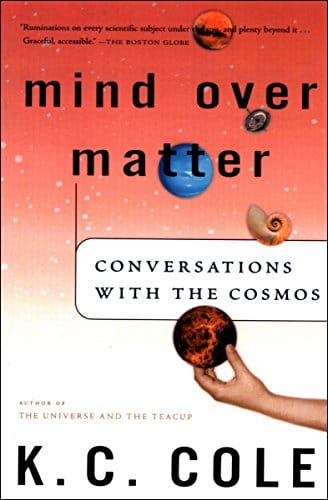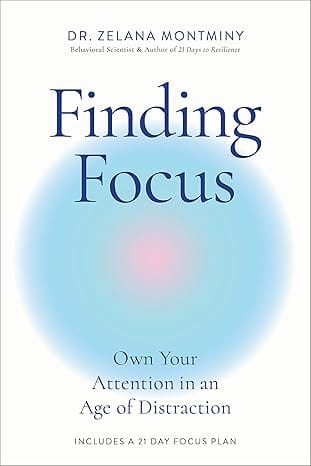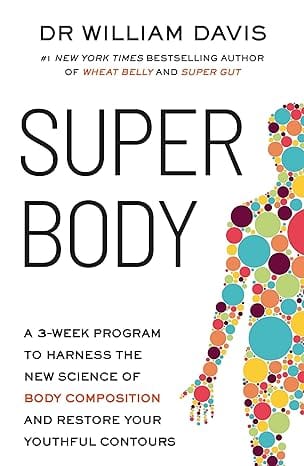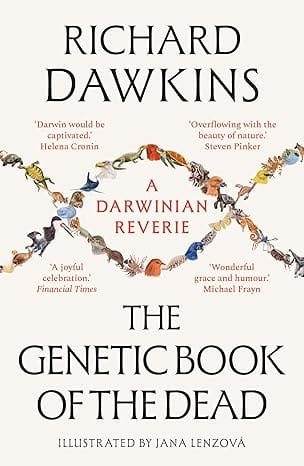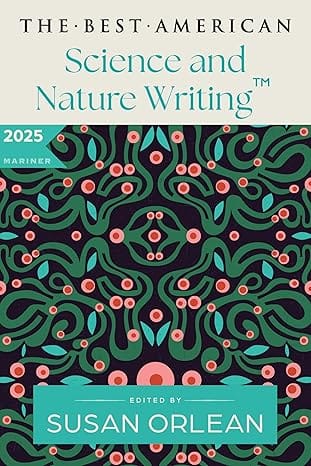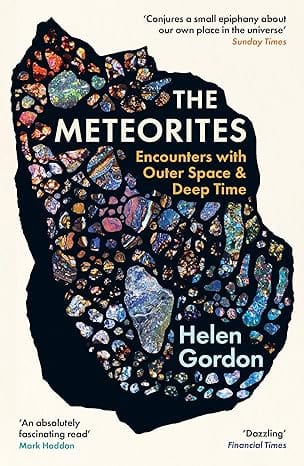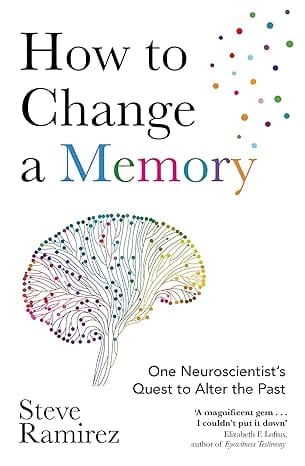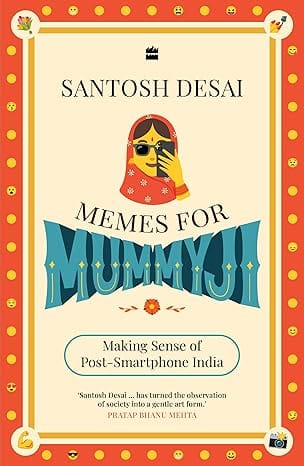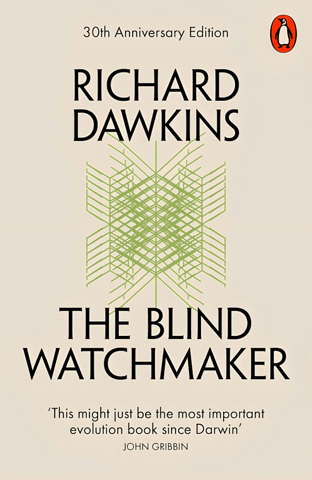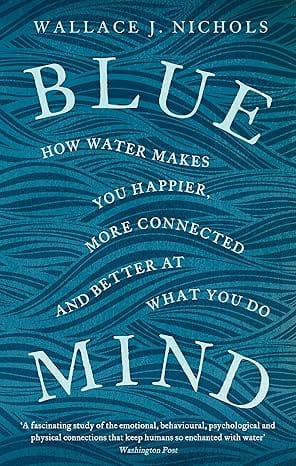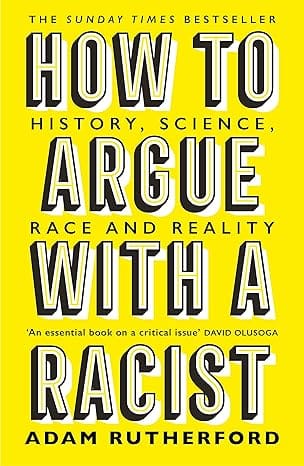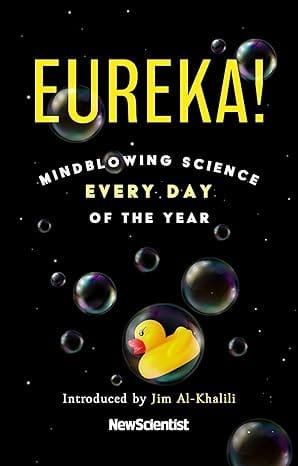WELCOME TO MIDLAND BOOK SHOP!
SHOP FOR
- Non-ficton
- Non-ficton
- Contemporary Fiction
- Contemporary Fiction
- Children
- Children
- Comics & Graphic Novels
- Comics & Graphic Novels
- Non-Fiction
- Non-Fiction
- Fiction
- Fiction
Shop No.20, Aurobindo Palace Market, Hauz Khas, Near Church +91 9818282497 | 011 26867121 110016 New Delhi IN
Midland The Book Shop ™
Shop No.20, Aurobindo Palace Market, Hauz Khas, Near Church +91 9818282497 | 011 26867121 New Delhi, IN
+919871604786 https://www.midlandbookshop.com/s/607fe93d7eafcac1f2c73ea4/677cda367903fd013d69b606/without-tag-line-480x480.png" [email protected]9780156029568 62c969575e4325aafe0b61ac Mind Over Matter Conversations With The Cosmos https://www.midlandbookshop.com/s/607fe93d7eafcac1f2c73ea4/62c969585e4325aafe0b61be/51ykizwxcml.jpg 9780156029568
“Ruminations on every scientific subject over the sun—and plenty beyond it”—from the bestselling author of The Universe and the Teacup (The Boston Globe).
A San Jose Mercury News Best Book of the Year
A recipient of the American Institute of Physics Award for Best Science Writer, K. C. Cole offers a wide-ranging collection of essays about the nature of nature, the universals in the universe, and the messy playfulness of great science.
In witty and fresh short takes, she explores some of the world’s most intriguing scientific subjects—from particle physics to cosmology to mathematics and astronomy—and introduces a few of science’s great minds. Revealing the universe to be elegant, intriguing, and, above all, relevant to our everyday lives, this book is “an absolute delight [that] belongs on the bedside bookshelf of every science enthusiast” (San Jose Mercury News).
“Cole seeks the wondrous in the stuff we mistake for just ordinary.” —Publishers Weekly
K. C. Cole, the Los Angeles Times science writer and columnist, always has a fresh take on cutting-edge scientific discoveries, which she makes both understandable and very human. Reporting on physics, cosmology, mathematics, astronomy, and more, Cole's essays, culled from her popular Mind Over Matter columns, reveal the universe as simple, constant, and complex—and wholly relevant to politics, art, and every dimension of human life.
A San Jose Mercury News Best Book of the Year
A recipient of the American Institute of Physics Award for Best Science Writer, K. C. Cole offers a wide-ranging collection of essays about the nature of nature, the universals in the universe, and the messy playfulness of great science.
In witty and fresh short takes, she explores some of the world’s most intriguing scientific subjects—from particle physics to cosmology to mathematics and astronomy—and introduces a few of science’s great minds. Revealing the universe to be elegant, intriguing, and, above all, relevant to our everyday lives, this book is “an absolute delight [that] belongs on the bedside bookshelf of every science enthusiast” (San Jose Mercury News).
“Cole seeks the wondrous in the stuff we mistake for just ordinary.” —Publishers Weekly
K. C. Cole, the Los Angeles Times science writer and columnist, always has a fresh take on cutting-edge scientific discoveries, which she makes both understandable and very human. Reporting on physics, cosmology, mathematics, astronomy, and more, Cole's essays, culled from her popular Mind Over Matter columns, reveal the universe as simple, constant, and complex—and wholly relevant to politics, art, and every dimension of human life.
From Booklist
Having wound up her "Mind over Matter" science column for the Los Angeles Times, journalist Cole here corrals about 90 of her serial musings. More personal than her books, which, like The Hole in the Universe (2001), "translate" physics and mathematics for a mass readership, Cole's columns take inspiration from her conversations, sightings in nature, or reactions to items of science news or entertainment. An element of apology frequently surfaces here, for Cole is apparently responding to opinion from a segment of physicists who are either disdainful or jealous of successful popularizers such as the late Carl Sagan or her, for that matter. Her concrete defense, of course, is her skillful writing, built on sparking curiosity about her topics. These she broadly sorts into those about detection of impinging cosmic information; what the information communicates about what is out there; and the experience of doing science. Whether conceiving a column idea while at the theater, the lab, or the Canadian Rockies, Cole knows how to wrap it into a wonder-prompting package. Gilbert Taylor
Copyright © American Library Association. All rights reserved --This text refers to an alternate kindle_edition edition.
Copyright © American Library Association. All rights reserved --This text refers to an alternate kindle_edition edition.
Review
PRAISE FOR THE UNIVERSE AND THE TEACUP
"Cole's beguiling and lucid book provides fresh insights into the crucial role that mathematics plays in science. . . . With lighthearted wit, she makes clear how numbers alone can explain so much but never all."--San Francisco Chronicle
“Even the most confirmed mathophobe should find it an easy read, and possibly even a fascinating one."--The Boston Globe
--This text refers to an alternate kindle_edition edition.
"Cole's beguiling and lucid book provides fresh insights into the crucial role that mathematics plays in science. . . . With lighthearted wit, she makes clear how numbers alone can explain so much but never all."--San Francisco Chronicle
“Even the most confirmed mathophobe should find it an easy read, and possibly even a fascinating one."--The Boston Globe
--This text refers to an alternate kindle_edition edition.
Excerpt. © Reprinted by permission. All rights reserved.
The I of the Beholder
The Emperor and Enron
You can fool all of the people some of the time and some of the people all of the time, but the easiest person to fool is yourself. Especially when the products of your own wishful thinking are also being peddled by higher authorities.
So it struck me as particularly apt that I took a class of UCLA students to the oddball Museum of Jurassic Technology in Culver City during a week when the Enron mirage was dissolving; when dubious claims for the production of fusion energy got major play in the journal Science; when Harvard biologist E. O. Wilson was trying to turn people's attention to wholesale extinction of life; when military planners were blithely bringing back nuclear weapons as instruments of foreign policy.
The struggle of science has always been somehow to get outside ourselves, so we can see the world objectively. The struggle has always been doomed. "We each live our mental life in a prison-house from which there is no escape," wrote the British physicist James Jeans. "It is our body; and its only communication with the outer world is through our sense organs-eyes, ears, etc. These form windows through which we can look out on to the outer world and acquire knowledge of it."
The windows are cloudy, of course, veiled by expectations, distorted by frames of reference, disturbed by our very attempts to look. Especially when we stand so close that we can't see through the fog of our own hot breath, our own smudgy fingerprints.
This is the sort of thinking bound to trail you like a wake out of the Museum of Jurassic Technology. If you haven't been there, I'm not going to recommend it. It will make you laugh, but it will also upset you. It will leave you wondering if you just didn't get it, or if you got it too well, or if someone was pulling your leg, or if you were pulling your own. You will wonder what thoughts are yours, and which are planted, and why we are so exceedingly well wired to believe official pronouncements-especially when they are obscure, pompous, and make us feel a little stupid.
Probably just as artist/creator David Wilson intended.*
For example, this funky piece of performance art might bring to mind-as it did for one of my students-Enron. How could so many people, so many accountants and investors and regulators and business journalists, believe so completely in so much thin air? At least in part because the "authorities" convinced us it was okay to do so and, worse, convinced each other.
The mind creates reality as well as muddles it. That is how placebos work.
As a friend likes to say, far more insidious than an emperor without clothes are clothes without an emperor. Authorities should always be stripped.
Scientists have thin patience for mere veneers, which is why many physicists complained loudly when the prestigious journal Science prominently touted a breakthrough in tabletop fusion technology-despite the widespread skepticism of the scientific community, despite failure to duplicate the results. Not that there was no there there. Just maybe there was. But tentative truths do not deserve such royal window dressing. The authority of science (or Science) is too powerful to toss around lightly.
Of course, as Jeans pointed out, our view is always partly cloudy. The closer we are, the harder it is to see. The greatest danger is believing we can ever completely separate ourselves from our surroundings. Consider, as E. O. Wilson does, the blatant absurdity of talking about the environment as if it were something apart from ourselves, a special-interest lobby, remote and foreign, like "outer space" or Afghanistan.
Increasingly, we are the environment.
As E. O. Wilson points out in The Future of Life, when humanity passed the six-billion mark, "we had already exceeded by as much as a hundred times the biomass of any large animal species that ever existed on land." We consume and exhale stuff in such huge quantities that we have already changed the air, the water, the continents. By the end of this century, we may well have extinguished half the species of plants and animals that ever lived.
We take comfort in the thought that extinction happens only to exotic creatures-big scary dinosaurs and tiny insignificant fish. Not in our backyards. The truth is, we are in serious danger of extinguishing almost everything, not excluding ourselves. And we can't stop if we can't see.
Self-referential systems are a bear. This sentence is false. Or not.
The authorities aren't helping. Instead, some authorities are telling us that we should be ready to use nuclear weapons-which do not merely destroy cities but vaporize them-to make the world safe from terror.
Somebody please get the Windex.
Normalization
I didn't understand what a truly bizarre place L.A. was until a few months after I arrived and was invited to a Halloween party. Despite considerable effort, I couldn't find an appropriate "costume": No matter how outrageous a getup I picked, I was informed it was "normal" attire for someone.
A scant year later, a friend visiting from the East Coast kept surprising me by exclaiming every time we passed a thong bikini or a crown of spiked hair.
For her, these oddities demanded attention; for me, they were already wallpaper.
So it goes. What at first glance sets off sirens in your cerebellum, after a while fails to stir up so much as a neuronal breeze.
I was horrified to see my daughter go to school with bra straps showing, only to realize that all her friends were wearing more or less the same attire.
These days, I don't even notice errant lingerie-on myself or anyone else.
We get used to almost anything that comes upon us slowly. The classic example is the frog plopped into a pot of hot water; he promptly leaps out. Place the same frog into cool water and turn the heat up slowly, however, and he'll sit contentedly until he's cooked.*
It can be useful not to notice things, of course. You'd be endlessly distracted if you couldn't shut out constant signals such as the feel of clothes on your skin, the glasses on your nose, the nose on your face. (And when would college students ever sleep if they couldn't tune out professors during lectures?)
Then again, some people become so accustomed to their own bad smells or foul manners that their "normal" becomes unbearable for anyone else.
Resetting "normal" means, in effect, resetting the zero point for sensation. (Physicists even use a version of this-appropriately enough called renormalization-to set unwanted effects to zero.) To register, a signal needs to rise above the background-like a car radio in a convertible. Like the stars over city lights.
It's a now classic L.A. story: After the Northridge earthquake, when L.A. went suddenly dark, hundreds of worried people called Griffith Observatory wondering about those strange lights overhead. So steadily that hardly anyone noticed, we'd been spilling city light into the sky, washing out the stars; and while a nearly starless sky seemed "normal," the sight of thousands of stars was shocking.
Leave it to the Czech Republic (a nation run by a playwright) to become the first nation to pass a law prohibiting light pollution.
Here's a scarier example: Not so long ago, the deadly microorganism known to biologists as Clostridium botulinum was known primarily as the source of a lethal poison found lurking in bulging soup cans-one of the most poisonous substances known. Today, it's a beauty treatment, injected at some expense into foreheads to make wrinkles go (temporarily) away. This has gotten to be so "normal" that Botox parties are today what Tupperware parties were to my mother's generation.
This is not a good thing, to put it mildly. According to the editor of Science magazine, Donald Kennedy, in a recent issue of his journal, C. botulinum ranks right after anthrax on the list of biological weapons terrorists might employ. If the demand for Botox continues to soar, and longer-lasting strains hit the market, as soon seems plausible, "will we be happy to have that many of these hot bugs around?" Kennedy asks.
The key to spinning poison into beauty potion lies partly in the words: "Botox" sounds better than "botulism." It's always the way with normalization: A "daisy cutter" seems so Martha Stewart. "Taking out" is a term from musical chairs, or for taking out the garbage-certainly not somebody's son or grandmother. No splattered blood or melted flesh.
In reality, a daisy cutter is, as everyone now knows, a fifteen-thousand-pound "antipersonnel" weapon. It delivers scarcely one-thousandth the power of the Hiroshima nuclear bomb-which itself is pathetically puny by today's (even mininuke) standards.
What does it mean to scale up by a thousand? Imagine, as a physicist friend did, that you suddenly find yourself serving dinner for four thousand people instead of four. Making do with the same kitchen, same pots, same glassware. This is a fair comparison, he said, because after all, the Earth itself-the people, the homes, the civilizations-does not change even as firepower increases.
The progression from conventional weapons to nuclear ones is not like going from bra straps to tongue piercing. Closer to summing up the situation is Einstein's remark: "I do not know with what weapons World War III will be fought, but World War IV will be fought with sticks and stones." Good people will differ on choices of action, but you can't see where you're going if you mistake your destination for wallpaper. Be careful what you normalize. It might just take you out.
Copyright © 2003 by K. C. Cole
All rights reserved. No part of this publication may
be reproduced or transmitted in any form or by any means,
electronic or mechanical, including photocopy, recording, or
any information storage and retrieval system, without
permission in writing from the publisher.
Requests for permission to make copies of any part of
the work should be mailed to the following address:
Permissions Department, Harcourt, Inc.,
6277 Sea Harbor Drive,
Orlando, Florida 32887-6777.
--This text refers to an alternate kindle_edition edition.
The Emperor and Enron
You can fool all of the people some of the time and some of the people all of the time, but the easiest person to fool is yourself. Especially when the products of your own wishful thinking are also being peddled by higher authorities.
So it struck me as particularly apt that I took a class of UCLA students to the oddball Museum of Jurassic Technology in Culver City during a week when the Enron mirage was dissolving; when dubious claims for the production of fusion energy got major play in the journal Science; when Harvard biologist E. O. Wilson was trying to turn people's attention to wholesale extinction of life; when military planners were blithely bringing back nuclear weapons as instruments of foreign policy.
The struggle of science has always been somehow to get outside ourselves, so we can see the world objectively. The struggle has always been doomed. "We each live our mental life in a prison-house from which there is no escape," wrote the British physicist James Jeans. "It is our body; and its only communication with the outer world is through our sense organs-eyes, ears, etc. These form windows through which we can look out on to the outer world and acquire knowledge of it."
The windows are cloudy, of course, veiled by expectations, distorted by frames of reference, disturbed by our very attempts to look. Especially when we stand so close that we can't see through the fog of our own hot breath, our own smudgy fingerprints.
This is the sort of thinking bound to trail you like a wake out of the Museum of Jurassic Technology. If you haven't been there, I'm not going to recommend it. It will make you laugh, but it will also upset you. It will leave you wondering if you just didn't get it, or if you got it too well, or if someone was pulling your leg, or if you were pulling your own. You will wonder what thoughts are yours, and which are planted, and why we are so exceedingly well wired to believe official pronouncements-especially when they are obscure, pompous, and make us feel a little stupid.
Probably just as artist/creator David Wilson intended.*
For example, this funky piece of performance art might bring to mind-as it did for one of my students-Enron. How could so many people, so many accountants and investors and regulators and business journalists, believe so completely in so much thin air? At least in part because the "authorities" convinced us it was okay to do so and, worse, convinced each other.
The mind creates reality as well as muddles it. That is how placebos work.
As a friend likes to say, far more insidious than an emperor without clothes are clothes without an emperor. Authorities should always be stripped.
Scientists have thin patience for mere veneers, which is why many physicists complained loudly when the prestigious journal Science prominently touted a breakthrough in tabletop fusion technology-despite the widespread skepticism of the scientific community, despite failure to duplicate the results. Not that there was no there there. Just maybe there was. But tentative truths do not deserve such royal window dressing. The authority of science (or Science) is too powerful to toss around lightly.
Of course, as Jeans pointed out, our view is always partly cloudy. The closer we are, the harder it is to see. The greatest danger is believing we can ever completely separate ourselves from our surroundings. Consider, as E. O. Wilson does, the blatant absurdity of talking about the environment as if it were something apart from ourselves, a special-interest lobby, remote and foreign, like "outer space" or Afghanistan.
Increasingly, we are the environment.
As E. O. Wilson points out in The Future of Life, when humanity passed the six-billion mark, "we had already exceeded by as much as a hundred times the biomass of any large animal species that ever existed on land." We consume and exhale stuff in such huge quantities that we have already changed the air, the water, the continents. By the end of this century, we may well have extinguished half the species of plants and animals that ever lived.
We take comfort in the thought that extinction happens only to exotic creatures-big scary dinosaurs and tiny insignificant fish. Not in our backyards. The truth is, we are in serious danger of extinguishing almost everything, not excluding ourselves. And we can't stop if we can't see.
Self-referential systems are a bear. This sentence is false. Or not.
The authorities aren't helping. Instead, some authorities are telling us that we should be ready to use nuclear weapons-which do not merely destroy cities but vaporize them-to make the world safe from terror.
Somebody please get the Windex.
Normalization
I didn't understand what a truly bizarre place L.A. was until a few months after I arrived and was invited to a Halloween party. Despite considerable effort, I couldn't find an appropriate "costume": No matter how outrageous a getup I picked, I was informed it was "normal" attire for someone.
A scant year later, a friend visiting from the East Coast kept surprising me by exclaiming every time we passed a thong bikini or a crown of spiked hair.
For her, these oddities demanded attention; for me, they were already wallpaper.
So it goes. What at first glance sets off sirens in your cerebellum, after a while fails to stir up so much as a neuronal breeze.
I was horrified to see my daughter go to school with bra straps showing, only to realize that all her friends were wearing more or less the same attire.
These days, I don't even notice errant lingerie-on myself or anyone else.
We get used to almost anything that comes upon us slowly. The classic example is the frog plopped into a pot of hot water; he promptly leaps out. Place the same frog into cool water and turn the heat up slowly, however, and he'll sit contentedly until he's cooked.*
It can be useful not to notice things, of course. You'd be endlessly distracted if you couldn't shut out constant signals such as the feel of clothes on your skin, the glasses on your nose, the nose on your face. (And when would college students ever sleep if they couldn't tune out professors during lectures?)
Then again, some people become so accustomed to their own bad smells or foul manners that their "normal" becomes unbearable for anyone else.
Resetting "normal" means, in effect, resetting the zero point for sensation. (Physicists even use a version of this-appropriately enough called renormalization-to set unwanted effects to zero.) To register, a signal needs to rise above the background-like a car radio in a convertible. Like the stars over city lights.
It's a now classic L.A. story: After the Northridge earthquake, when L.A. went suddenly dark, hundreds of worried people called Griffith Observatory wondering about those strange lights overhead. So steadily that hardly anyone noticed, we'd been spilling city light into the sky, washing out the stars; and while a nearly starless sky seemed "normal," the sight of thousands of stars was shocking.
Leave it to the Czech Republic (a nation run by a playwright) to become the first nation to pass a law prohibiting light pollution.
Here's a scarier example: Not so long ago, the deadly microorganism known to biologists as Clostridium botulinum was known primarily as the source of a lethal poison found lurking in bulging soup cans-one of the most poisonous substances known. Today, it's a beauty treatment, injected at some expense into foreheads to make wrinkles go (temporarily) away. This has gotten to be so "normal" that Botox parties are today what Tupperware parties were to my mother's generation.
This is not a good thing, to put it mildly. According to the editor of Science magazine, Donald Kennedy, in a recent issue of his journal, C. botulinum ranks right after anthrax on the list of biological weapons terrorists might employ. If the demand for Botox continues to soar, and longer-lasting strains hit the market, as soon seems plausible, "will we be happy to have that many of these hot bugs around?" Kennedy asks.
The key to spinning poison into beauty potion lies partly in the words: "Botox" sounds better than "botulism." It's always the way with normalization: A "daisy cutter" seems so Martha Stewart. "Taking out" is a term from musical chairs, or for taking out the garbage-certainly not somebody's son or grandmother. No splattered blood or melted flesh.
In reality, a daisy cutter is, as everyone now knows, a fifteen-thousand-pound "antipersonnel" weapon. It delivers scarcely one-thousandth the power of the Hiroshima nuclear bomb-which itself is pathetically puny by today's (even mininuke) standards.
What does it mean to scale up by a thousand? Imagine, as a physicist friend did, that you suddenly find yourself serving dinner for four thousand people instead of four. Making do with the same kitchen, same pots, same glassware. This is a fair comparison, he said, because after all, the Earth itself-the people, the homes, the civilizations-does not change even as firepower increases.
The progression from conventional weapons to nuclear ones is not like going from bra straps to tongue piercing. Closer to summing up the situation is Einstein's remark: "I do not know with what weapons World War III will be fought, but World War IV will be fought with sticks and stones." Good people will differ on choices of action, but you can't see where you're going if you mistake your destination for wallpaper. Be careful what you normalize. It might just take you out.
Copyright © 2003 by K. C. Cole
All rights reserved. No part of this publication may
be reproduced or transmitted in any form or by any means,
electronic or mechanical, including photocopy, recording, or
any information storage and retrieval system, without
permission in writing from the publisher.
Requests for permission to make copies of any part of
the work should be mailed to the following address:
Permissions Department, Harcourt, Inc.,
6277 Sea Harbor Drive,
Orlando, Florida 32887-6777.
--This text refers to an alternate kindle_edition edition.
About the Author
A popular science columnist for the Los Angeles Times and teacher at UCLA, K.C. Cole is a recipient of the 1995 American Institute of Physics Award for Best Science Writing. She is also the author of the internationally bestselling The Universe and the Teacup, First You Build a Cloud, and The Hole in the Universe. Cole lives in Santa Monica, California. --This text refers to an alternate kindle_edition edition.
From the Back Cover
"An absolute delight. Belongs on the bedside bookshelf of every science enthusiast and should also be a treat for any reader curious about the universe." --San Jose Mercury-News (A Best Book of the Year)
Join bestselling author K.C. Cole on the trip of a lifetime, as she invites you to understand the nature of nature, the universals in the universe, the messy playfulness of great science. In witty and fresh short takes, she explores some of the world's most intriguing scientific subjects-from particle physics to cosmology to mathematics and astronomy-and introduces a few of science's great minds. With her inimitable style and flair, K.C. Cole brings science to the reader's doorstep, revealing the universe to be elegant, intriguing, and, above all, relevant to our everyday lives.
"With every short, sharp piece in this book, K.C. Cole slips a thin wire into your head through which a charge of high-voltage pleasure surges. . . . If you're off in search of wonder, K.C. Cole gives you a map you can keep in the glove box." -Alan Alda, host of Scientific American Frontiers
An award-winning writer for the Los Angeles Times and the New Yorker, K.C. Cole is the recipient of the American Institute of Physics Award for Best Science Writer. She lives in Santa Monica, California.
--This text refers to an alternate kindle_edition edition.
Join bestselling author K.C. Cole on the trip of a lifetime, as she invites you to understand the nature of nature, the universals in the universe, the messy playfulness of great science. In witty and fresh short takes, she explores some of the world's most intriguing scientific subjects-from particle physics to cosmology to mathematics and astronomy-and introduces a few of science's great minds. With her inimitable style and flair, K.C. Cole brings science to the reader's doorstep, revealing the universe to be elegant, intriguing, and, above all, relevant to our everyday lives.
"With every short, sharp piece in this book, K.C. Cole slips a thin wire into your head through which a charge of high-voltage pleasure surges. . . . If you're off in search of wonder, K.C. Cole gives you a map you can keep in the glove box." -Alan Alda, host of Scientific American Frontiers
An award-winning writer for the Los Angeles Times and the New Yorker, K.C. Cole is the recipient of the American Institute of Physics Award for Best Science Writer. She lives in Santa Monica, California.
--This text refers to an alternate kindle_edition edition.
out of stock INR 600
1 1
Email ID already exists!
Your Current password is incorrect
Password Updated Successfully
Thanks for your Feedback
- Home
- Science Technology And Medicine
- Mind Over Matter Conversations With The Cosmos
Mind Over Matter Conversations With The Cosmos
ISBN: 9780156029568
₹600
₹750 (20% OFF)SIZE GUIDE
Back In Stock Shortly - Fill The Book Request Form
Sold By: Hauz Khas - Aurobindo Market
Details
- ISBN: 9780156029568
- Author: K C Cole
- Publisher: Harcourt
- Pages: 329
- Format: Paperback
Book Description
“Ruminations on every scientific subject over the sun—and plenty beyond it”—from the bestselling author of The Universe and the Teacup (The Boston Globe).
A San Jose Mercury News Best Book of the Year
A recipient of the American Institute of Physics Award for Best Science Writer, K. C. Cole offers a wide-ranging collection of essays about the nature of nature, the universals in the universe, and the messy playfulness of great science.
In witty and fresh short takes, she explores some of the world’s most intriguing scientific subjects—from particle physics to cosmology to mathematics and astronomy—and introduces a few of science’s great minds. Revealing the universe to be elegant, intriguing, and, above all, relevant to our everyday lives, this book is “an absolute delight [that] belongs on the bedside bookshelf of every science enthusiast” (San Jose Mercury News).
“Cole seeks the wondrous in the stuff we mistake for just ordinary.” —Publishers Weekly
K. C. Cole, the Los Angeles Times science writer and columnist, always has a fresh take on cutting-edge scientific discoveries, which she makes both understandable and very human. Reporting on physics, cosmology, mathematics, astronomy, and more, Cole's essays, culled from her popular Mind Over Matter columns, reveal the universe as simple, constant, and complex—and wholly relevant to politics, art, and every dimension of human life.
A San Jose Mercury News Best Book of the Year
A recipient of the American Institute of Physics Award for Best Science Writer, K. C. Cole offers a wide-ranging collection of essays about the nature of nature, the universals in the universe, and the messy playfulness of great science.
In witty and fresh short takes, she explores some of the world’s most intriguing scientific subjects—from particle physics to cosmology to mathematics and astronomy—and introduces a few of science’s great minds. Revealing the universe to be elegant, intriguing, and, above all, relevant to our everyday lives, this book is “an absolute delight [that] belongs on the bedside bookshelf of every science enthusiast” (San Jose Mercury News).
“Cole seeks the wondrous in the stuff we mistake for just ordinary.” —Publishers Weekly
K. C. Cole, the Los Angeles Times science writer and columnist, always has a fresh take on cutting-edge scientific discoveries, which she makes both understandable and very human. Reporting on physics, cosmology, mathematics, astronomy, and more, Cole's essays, culled from her popular Mind Over Matter columns, reveal the universe as simple, constant, and complex—and wholly relevant to politics, art, and every dimension of human life.
From Booklist
Having wound up her "Mind over Matter" science column for the Los Angeles Times, journalist Cole here corrals about 90 of her serial musings. More personal than her books, which, like The Hole in the Universe (2001), "translate" physics and mathematics for a mass readership, Cole's columns take inspiration from her conversations, sightings in nature, or reactions to items of science news or entertainment. An element of apology frequently surfaces here, for Cole is apparently responding to opinion from a segment of physicists who are either disdainful or jealous of successful popularizers such as the late Carl Sagan or her, for that matter. Her concrete defense, of course, is her skillful writing, built on sparking curiosity about her topics. These she broadly sorts into those about detection of impinging cosmic information; what the information communicates about what is out there; and the experience of doing science. Whether conceiving a column idea while at the theater, the lab, or the Canadian Rockies, Cole knows how to wrap it into a wonder-prompting package. Gilbert Taylor
Copyright © American Library Association. All rights reserved --This text refers to an alternate kindle_edition edition.
Copyright © American Library Association. All rights reserved --This text refers to an alternate kindle_edition edition.
Review
PRAISE FOR THE UNIVERSE AND THE TEACUP
"Cole's beguiling and lucid book provides fresh insights into the crucial role that mathematics plays in science. . . . With lighthearted wit, she makes clear how numbers alone can explain so much but never all."--San Francisco Chronicle
“Even the most confirmed mathophobe should find it an easy read, and possibly even a fascinating one."--The Boston Globe
--This text refers to an alternate kindle_edition edition.
"Cole's beguiling and lucid book provides fresh insights into the crucial role that mathematics plays in science. . . . With lighthearted wit, she makes clear how numbers alone can explain so much but never all."--San Francisco Chronicle
“Even the most confirmed mathophobe should find it an easy read, and possibly even a fascinating one."--The Boston Globe
--This text refers to an alternate kindle_edition edition.
Excerpt. © Reprinted by permission. All rights reserved.
The I of the Beholder
The Emperor and Enron
You can fool all of the people some of the time and some of the people all of the time, but the easiest person to fool is yourself. Especially when the products of your own wishful thinking are also being peddled by higher authorities.
So it struck me as particularly apt that I took a class of UCLA students to the oddball Museum of Jurassic Technology in Culver City during a week when the Enron mirage was dissolving; when dubious claims for the production of fusion energy got major play in the journal Science; when Harvard biologist E. O. Wilson was trying to turn people's attention to wholesale extinction of life; when military planners were blithely bringing back nuclear weapons as instruments of foreign policy.
The struggle of science has always been somehow to get outside ourselves, so we can see the world objectively. The struggle has always been doomed. "We each live our mental life in a prison-house from which there is no escape," wrote the British physicist James Jeans. "It is our body; and its only communication with the outer world is through our sense organs-eyes, ears, etc. These form windows through which we can look out on to the outer world and acquire knowledge of it."
The windows are cloudy, of course, veiled by expectations, distorted by frames of reference, disturbed by our very attempts to look. Especially when we stand so close that we can't see through the fog of our own hot breath, our own smudgy fingerprints.
This is the sort of thinking bound to trail you like a wake out of the Museum of Jurassic Technology. If you haven't been there, I'm not going to recommend it. It will make you laugh, but it will also upset you. It will leave you wondering if you just didn't get it, or if you got it too well, or if someone was pulling your leg, or if you were pulling your own. You will wonder what thoughts are yours, and which are planted, and why we are so exceedingly well wired to believe official pronouncements-especially when they are obscure, pompous, and make us feel a little stupid.
Probably just as artist/creator David Wilson intended.*
For example, this funky piece of performance art might bring to mind-as it did for one of my students-Enron. How could so many people, so many accountants and investors and regulators and business journalists, believe so completely in so much thin air? At least in part because the "authorities" convinced us it was okay to do so and, worse, convinced each other.
The mind creates reality as well as muddles it. That is how placebos work.
As a friend likes to say, far more insidious than an emperor without clothes are clothes without an emperor. Authorities should always be stripped.
Scientists have thin patience for mere veneers, which is why many physicists complained loudly when the prestigious journal Science prominently touted a breakthrough in tabletop fusion technology-despite the widespread skepticism of the scientific community, despite failure to duplicate the results. Not that there was no there there. Just maybe there was. But tentative truths do not deserve such royal window dressing. The authority of science (or Science) is too powerful to toss around lightly.
Of course, as Jeans pointed out, our view is always partly cloudy. The closer we are, the harder it is to see. The greatest danger is believing we can ever completely separate ourselves from our surroundings. Consider, as E. O. Wilson does, the blatant absurdity of talking about the environment as if it were something apart from ourselves, a special-interest lobby, remote and foreign, like "outer space" or Afghanistan.
Increasingly, we are the environment.
As E. O. Wilson points out in The Future of Life, when humanity passed the six-billion mark, "we had already exceeded by as much as a hundred times the biomass of any large animal species that ever existed on land." We consume and exhale stuff in such huge quantities that we have already changed the air, the water, the continents. By the end of this century, we may well have extinguished half the species of plants and animals that ever lived.
We take comfort in the thought that extinction happens only to exotic creatures-big scary dinosaurs and tiny insignificant fish. Not in our backyards. The truth is, we are in serious danger of extinguishing almost everything, not excluding ourselves. And we can't stop if we can't see.
Self-referential systems are a bear. This sentence is false. Or not.
The authorities aren't helping. Instead, some authorities are telling us that we should be ready to use nuclear weapons-which do not merely destroy cities but vaporize them-to make the world safe from terror.
Somebody please get the Windex.
Normalization
I didn't understand what a truly bizarre place L.A. was until a few months after I arrived and was invited to a Halloween party. Despite considerable effort, I couldn't find an appropriate "costume": No matter how outrageous a getup I picked, I was informed it was "normal" attire for someone.
A scant year later, a friend visiting from the East Coast kept surprising me by exclaiming every time we passed a thong bikini or a crown of spiked hair.
For her, these oddities demanded attention; for me, they were already wallpaper.
So it goes. What at first glance sets off sirens in your cerebellum, after a while fails to stir up so much as a neuronal breeze.
I was horrified to see my daughter go to school with bra straps showing, only to realize that all her friends were wearing more or less the same attire.
These days, I don't even notice errant lingerie-on myself or anyone else.
We get used to almost anything that comes upon us slowly. The classic example is the frog plopped into a pot of hot water; he promptly leaps out. Place the same frog into cool water and turn the heat up slowly, however, and he'll sit contentedly until he's cooked.*
It can be useful not to notice things, of course. You'd be endlessly distracted if you couldn't shut out constant signals such as the feel of clothes on your skin, the glasses on your nose, the nose on your face. (And when would college students ever sleep if they couldn't tune out professors during lectures?)
Then again, some people become so accustomed to their own bad smells or foul manners that their "normal" becomes unbearable for anyone else.
Resetting "normal" means, in effect, resetting the zero point for sensation. (Physicists even use a version of this-appropriately enough called renormalization-to set unwanted effects to zero.) To register, a signal needs to rise above the background-like a car radio in a convertible. Like the stars over city lights.
It's a now classic L.A. story: After the Northridge earthquake, when L.A. went suddenly dark, hundreds of worried people called Griffith Observatory wondering about those strange lights overhead. So steadily that hardly anyone noticed, we'd been spilling city light into the sky, washing out the stars; and while a nearly starless sky seemed "normal," the sight of thousands of stars was shocking.
Leave it to the Czech Republic (a nation run by a playwright) to become the first nation to pass a law prohibiting light pollution.
Here's a scarier example: Not so long ago, the deadly microorganism known to biologists as Clostridium botulinum was known primarily as the source of a lethal poison found lurking in bulging soup cans-one of the most poisonous substances known. Today, it's a beauty treatment, injected at some expense into foreheads to make wrinkles go (temporarily) away. This has gotten to be so "normal" that Botox parties are today what Tupperware parties were to my mother's generation.
This is not a good thing, to put it mildly. According to the editor of Science magazine, Donald Kennedy, in a recent issue of his journal, C. botulinum ranks right after anthrax on the list of biological weapons terrorists might employ. If the demand for Botox continues to soar, and longer-lasting strains hit the market, as soon seems plausible, "will we be happy to have that many of these hot bugs around?" Kennedy asks.
The key to spinning poison into beauty potion lies partly in the words: "Botox" sounds better than "botulism." It's always the way with normalization: A "daisy cutter" seems so Martha Stewart. "Taking out" is a term from musical chairs, or for taking out the garbage-certainly not somebody's son or grandmother. No splattered blood or melted flesh.
In reality, a daisy cutter is, as everyone now knows, a fifteen-thousand-pound "antipersonnel" weapon. It delivers scarcely one-thousandth the power of the Hiroshima nuclear bomb-which itself is pathetically puny by today's (even mininuke) standards.
What does it mean to scale up by a thousand? Imagine, as a physicist friend did, that you suddenly find yourself serving dinner for four thousand people instead of four. Making do with the same kitchen, same pots, same glassware. This is a fair comparison, he said, because after all, the Earth itself-the people, the homes, the civilizations-does not change even as firepower increases.
The progression from conventional weapons to nuclear ones is not like going from bra straps to tongue piercing. Closer to summing up the situation is Einstein's remark: "I do not know with what weapons World War III will be fought, but World War IV will be fought with sticks and stones." Good people will differ on choices of action, but you can't see where you're going if you mistake your destination for wallpaper. Be careful what you normalize. It might just take you out.
Copyright © 2003 by K. C. Cole
All rights reserved. No part of this publication may
be reproduced or transmitted in any form or by any means,
electronic or mechanical, including photocopy, recording, or
any information storage and retrieval system, without
permission in writing from the publisher.
Requests for permission to make copies of any part of
the work should be mailed to the following address:
Permissions Department, Harcourt, Inc.,
6277 Sea Harbor Drive,
Orlando, Florida 32887-6777.
--This text refers to an alternate kindle_edition edition.
The Emperor and Enron
You can fool all of the people some of the time and some of the people all of the time, but the easiest person to fool is yourself. Especially when the products of your own wishful thinking are also being peddled by higher authorities.
So it struck me as particularly apt that I took a class of UCLA students to the oddball Museum of Jurassic Technology in Culver City during a week when the Enron mirage was dissolving; when dubious claims for the production of fusion energy got major play in the journal Science; when Harvard biologist E. O. Wilson was trying to turn people's attention to wholesale extinction of life; when military planners were blithely bringing back nuclear weapons as instruments of foreign policy.
The struggle of science has always been somehow to get outside ourselves, so we can see the world objectively. The struggle has always been doomed. "We each live our mental life in a prison-house from which there is no escape," wrote the British physicist James Jeans. "It is our body; and its only communication with the outer world is through our sense organs-eyes, ears, etc. These form windows through which we can look out on to the outer world and acquire knowledge of it."
The windows are cloudy, of course, veiled by expectations, distorted by frames of reference, disturbed by our very attempts to look. Especially when we stand so close that we can't see through the fog of our own hot breath, our own smudgy fingerprints.
This is the sort of thinking bound to trail you like a wake out of the Museum of Jurassic Technology. If you haven't been there, I'm not going to recommend it. It will make you laugh, but it will also upset you. It will leave you wondering if you just didn't get it, or if you got it too well, or if someone was pulling your leg, or if you were pulling your own. You will wonder what thoughts are yours, and which are planted, and why we are so exceedingly well wired to believe official pronouncements-especially when they are obscure, pompous, and make us feel a little stupid.
Probably just as artist/creator David Wilson intended.*
For example, this funky piece of performance art might bring to mind-as it did for one of my students-Enron. How could so many people, so many accountants and investors and regulators and business journalists, believe so completely in so much thin air? At least in part because the "authorities" convinced us it was okay to do so and, worse, convinced each other.
The mind creates reality as well as muddles it. That is how placebos work.
As a friend likes to say, far more insidious than an emperor without clothes are clothes without an emperor. Authorities should always be stripped.
Scientists have thin patience for mere veneers, which is why many physicists complained loudly when the prestigious journal Science prominently touted a breakthrough in tabletop fusion technology-despite the widespread skepticism of the scientific community, despite failure to duplicate the results. Not that there was no there there. Just maybe there was. But tentative truths do not deserve such royal window dressing. The authority of science (or Science) is too powerful to toss around lightly.
Of course, as Jeans pointed out, our view is always partly cloudy. The closer we are, the harder it is to see. The greatest danger is believing we can ever completely separate ourselves from our surroundings. Consider, as E. O. Wilson does, the blatant absurdity of talking about the environment as if it were something apart from ourselves, a special-interest lobby, remote and foreign, like "outer space" or Afghanistan.
Increasingly, we are the environment.
As E. O. Wilson points out in The Future of Life, when humanity passed the six-billion mark, "we had already exceeded by as much as a hundred times the biomass of any large animal species that ever existed on land." We consume and exhale stuff in such huge quantities that we have already changed the air, the water, the continents. By the end of this century, we may well have extinguished half the species of plants and animals that ever lived.
We take comfort in the thought that extinction happens only to exotic creatures-big scary dinosaurs and tiny insignificant fish. Not in our backyards. The truth is, we are in serious danger of extinguishing almost everything, not excluding ourselves. And we can't stop if we can't see.
Self-referential systems are a bear. This sentence is false. Or not.
The authorities aren't helping. Instead, some authorities are telling us that we should be ready to use nuclear weapons-which do not merely destroy cities but vaporize them-to make the world safe from terror.
Somebody please get the Windex.
Normalization
I didn't understand what a truly bizarre place L.A. was until a few months after I arrived and was invited to a Halloween party. Despite considerable effort, I couldn't find an appropriate "costume": No matter how outrageous a getup I picked, I was informed it was "normal" attire for someone.
A scant year later, a friend visiting from the East Coast kept surprising me by exclaiming every time we passed a thong bikini or a crown of spiked hair.
For her, these oddities demanded attention; for me, they were already wallpaper.
So it goes. What at first glance sets off sirens in your cerebellum, after a while fails to stir up so much as a neuronal breeze.
I was horrified to see my daughter go to school with bra straps showing, only to realize that all her friends were wearing more or less the same attire.
These days, I don't even notice errant lingerie-on myself or anyone else.
We get used to almost anything that comes upon us slowly. The classic example is the frog plopped into a pot of hot water; he promptly leaps out. Place the same frog into cool water and turn the heat up slowly, however, and he'll sit contentedly until he's cooked.*
It can be useful not to notice things, of course. You'd be endlessly distracted if you couldn't shut out constant signals such as the feel of clothes on your skin, the glasses on your nose, the nose on your face. (And when would college students ever sleep if they couldn't tune out professors during lectures?)
Then again, some people become so accustomed to their own bad smells or foul manners that their "normal" becomes unbearable for anyone else.
Resetting "normal" means, in effect, resetting the zero point for sensation. (Physicists even use a version of this-appropriately enough called renormalization-to set unwanted effects to zero.) To register, a signal needs to rise above the background-like a car radio in a convertible. Like the stars over city lights.
It's a now classic L.A. story: After the Northridge earthquake, when L.A. went suddenly dark, hundreds of worried people called Griffith Observatory wondering about those strange lights overhead. So steadily that hardly anyone noticed, we'd been spilling city light into the sky, washing out the stars; and while a nearly starless sky seemed "normal," the sight of thousands of stars was shocking.
Leave it to the Czech Republic (a nation run by a playwright) to become the first nation to pass a law prohibiting light pollution.
Here's a scarier example: Not so long ago, the deadly microorganism known to biologists as Clostridium botulinum was known primarily as the source of a lethal poison found lurking in bulging soup cans-one of the most poisonous substances known. Today, it's a beauty treatment, injected at some expense into foreheads to make wrinkles go (temporarily) away. This has gotten to be so "normal" that Botox parties are today what Tupperware parties were to my mother's generation.
This is not a good thing, to put it mildly. According to the editor of Science magazine, Donald Kennedy, in a recent issue of his journal, C. botulinum ranks right after anthrax on the list of biological weapons terrorists might employ. If the demand for Botox continues to soar, and longer-lasting strains hit the market, as soon seems plausible, "will we be happy to have that many of these hot bugs around?" Kennedy asks.
The key to spinning poison into beauty potion lies partly in the words: "Botox" sounds better than "botulism." It's always the way with normalization: A "daisy cutter" seems so Martha Stewart. "Taking out" is a term from musical chairs, or for taking out the garbage-certainly not somebody's son or grandmother. No splattered blood or melted flesh.
In reality, a daisy cutter is, as everyone now knows, a fifteen-thousand-pound "antipersonnel" weapon. It delivers scarcely one-thousandth the power of the Hiroshima nuclear bomb-which itself is pathetically puny by today's (even mininuke) standards.
What does it mean to scale up by a thousand? Imagine, as a physicist friend did, that you suddenly find yourself serving dinner for four thousand people instead of four. Making do with the same kitchen, same pots, same glassware. This is a fair comparison, he said, because after all, the Earth itself-the people, the homes, the civilizations-does not change even as firepower increases.
The progression from conventional weapons to nuclear ones is not like going from bra straps to tongue piercing. Closer to summing up the situation is Einstein's remark: "I do not know with what weapons World War III will be fought, but World War IV will be fought with sticks and stones." Good people will differ on choices of action, but you can't see where you're going if you mistake your destination for wallpaper. Be careful what you normalize. It might just take you out.
Copyright © 2003 by K. C. Cole
All rights reserved. No part of this publication may
be reproduced or transmitted in any form or by any means,
electronic or mechanical, including photocopy, recording, or
any information storage and retrieval system, without
permission in writing from the publisher.
Requests for permission to make copies of any part of
the work should be mailed to the following address:
Permissions Department, Harcourt, Inc.,
6277 Sea Harbor Drive,
Orlando, Florida 32887-6777.
--This text refers to an alternate kindle_edition edition.
About the Author
A popular science columnist for the Los Angeles Times and teacher at UCLA, K.C. Cole is a recipient of the 1995 American Institute of Physics Award for Best Science Writing. She is also the author of the internationally bestselling The Universe and the Teacup, First You Build a Cloud, and The Hole in the Universe. Cole lives in Santa Monica, California. --This text refers to an alternate kindle_edition edition.
From the Back Cover
"An absolute delight. Belongs on the bedside bookshelf of every science enthusiast and should also be a treat for any reader curious about the universe." --San Jose Mercury-News (A Best Book of the Year)
Join bestselling author K.C. Cole on the trip of a lifetime, as she invites you to understand the nature of nature, the universals in the universe, the messy playfulness of great science. In witty and fresh short takes, she explores some of the world's most intriguing scientific subjects-from particle physics to cosmology to mathematics and astronomy-and introduces a few of science's great minds. With her inimitable style and flair, K.C. Cole brings science to the reader's doorstep, revealing the universe to be elegant, intriguing, and, above all, relevant to our everyday lives.
"With every short, sharp piece in this book, K.C. Cole slips a thin wire into your head through which a charge of high-voltage pleasure surges. . . . If you're off in search of wonder, K.C. Cole gives you a map you can keep in the glove box." -Alan Alda, host of Scientific American Frontiers
An award-winning writer for the Los Angeles Times and the New Yorker, K.C. Cole is the recipient of the American Institute of Physics Award for Best Science Writer. She lives in Santa Monica, California.
--This text refers to an alternate kindle_edition edition.
Join bestselling author K.C. Cole on the trip of a lifetime, as she invites you to understand the nature of nature, the universals in the universe, the messy playfulness of great science. In witty and fresh short takes, she explores some of the world's most intriguing scientific subjects-from particle physics to cosmology to mathematics and astronomy-and introduces a few of science's great minds. With her inimitable style and flair, K.C. Cole brings science to the reader's doorstep, revealing the universe to be elegant, intriguing, and, above all, relevant to our everyday lives.
"With every short, sharp piece in this book, K.C. Cole slips a thin wire into your head through which a charge of high-voltage pleasure surges. . . . If you're off in search of wonder, K.C. Cole gives you a map you can keep in the glove box." -Alan Alda, host of Scientific American Frontiers
An award-winning writer for the Los Angeles Times and the New Yorker, K.C. Cole is the recipient of the American Institute of Physics Award for Best Science Writer. She lives in Santa Monica, California.
--This text refers to an alternate kindle_edition edition.
User reviews
NEWSLETTER
Subscribe to get Email Updates!
Thanks for subscribing.
Your response has been recorded.

India's Iconic & Independent Book Store offering a vast selection of books across a variety of genres Since 1978.
"We Believe In The Power of Books" Our mission is to make books accessible to everyone, and to cultivate a culture of reading and learning. We strive to provide a wide range of books, from classic literature, sci-fi and fantasy, to graphic novels, biographies and self-help books, so that everyone can find something to read.
Whether you’re looking for your next great read, a gift for someone special, or just browsing, Midland is here to make your book-buying experience easy and enjoyable.
We are shipping pan India and across the world.
For Bulk Order / Corporate Gifting
 +91 9818282497 |
+91 9818282497 |  [email protected]
[email protected]
Click To Know More
INFORMATION
QUICK LINKS
ADDRESS
Midland Book Shop - Hauz Khas
Shop No.20, Aurobindo Palace Market, Near Church, New Delhi
Shop No.20, Aurobindo Palace Market, Near Church, New Delhi

